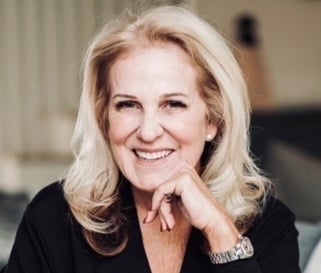Whether it’s the C-suite or the board of directors of a credit union or one of our professional or advocacy organizations, if the leadership’s not yet gender-balanced – half men, half women – men need to stand down.
There, I said it.
Many years ago, when I spoke at industry conferences and symposia about the credit union movement’s “woman problem” and why we as a movement needed to prioritize getting more women into leadership roles, lots of my fellow CEOs nodded in agreement. Beyond it simply being the right thing to do – good enough reason on its own for many of us -- I shared how the different perspectives that women leaders bring to the table improves performance. I also laid out the demographic, societal and workplace trends that pointed to what we now refer to as Diversity, Equity and Inclusion (DEI) needing to be a strategic priority for any enterprise seeking to secure its future.
Nonetheless, many in these largely-male audiences simply refused to believe our industry had a problem, citing my presence (and the few other women in the room) as evidence. Some even recoiled at my insistence on gender balance, and delivered some variation on “What, are you suggesting we need some sort of (insert nervous cough or breathless sputter) credit union affirmative action?”
At the time, I truly believed that wouldn’t be necessary as more people of goodwill actually came to understand how bad things actually were for the majority of women, particularly in an industry with such a large female workforce. And I said so. For years. Now, over a decade later, and eight years after Sheryl Sandberg’s groundbreaking book “Lean In” came out, we don’t have the excuse of not knowing.
Yet only paltry progress has been made.
According to the 50/50 Women on Boards Gender Diversity Directory and IndexTM for 2020, just 4% of the 540 financial services firms in the Russell 3000 have gender-balanced boards, 26% have just one woman serving, and fully 6% have zero women on their boards. Overall, a mere 19.5% of board seats in the financial services sector are held by women. Meanwhile, women still comprise slightly more than 50% of the U.S. population.
The story is even more dismaying when we take race into account. Currently, in the U.S. 60% of women are white and 40% are of color – a racial mix which, by the way, is projected to flip by 2060 to 56% women of color and 44% white women. Yet, white women held just 32.8% of total management positions in the U.S. last year and Asian, Black and Hispanic women together held just under 10.8% of those roles.
We can do better, much better, at addressing the fullness of our DEI short-comings -- in relation to both women overall and to individuals in our Black, Indigenous, and Persons of Color communities.
But it won’t happen without the cooperation and leadership of good men -- the men who want for their daughters the same opportunities that exist for their sons. The fact is that people who have power and position now need to relinquish some of it to make a space for women overall and for women of color especially.
So, please take a look in the mirror.
If you’re one of those high-powered men of goodwill who actually wants to fix credit unions’ “woman problem” and help us achieve gender balance in our lifetime, the most impactful thing you can do in the short-term is to simply stand down.
Are you serving on a board of directors with too few women? Be a leader and let your fellow directors know that you’re resigning in order to make space for more women. Then go a step further by seeking out a female successor and grooming her to win your seat.
And, the next time a colleague asks you to sit on your umpteenth board or industry committee, don’t simply acquiesce or beg off the commitment. Tap your considerable professional network to locate a qualified woman to serve instead. Then champion her candidacy and share your insights to help her succeed.
I promise you, the women are out there – qualified to contribute, prepared to lead, and eager to serve. So, if you’re having trouble locating women to step up, ask yourself about the barriers that are, perhaps inadvertently, discouraging women applicants. Better yet, ask the women themselves what needs to be done or changed to get them to step up. Then make the accommodations to facilitate their participation.
If even a handful of our male credit union leaders took this sort of bold and collaborative action, their example could reverberate throughout our movement and have a huge impact. It would also demonstrate to American consumers that credit union people really do operate according to different and better values than our for-profit bank competitors.
So, what do you think? Are you ready to stand down so more women can step up?







